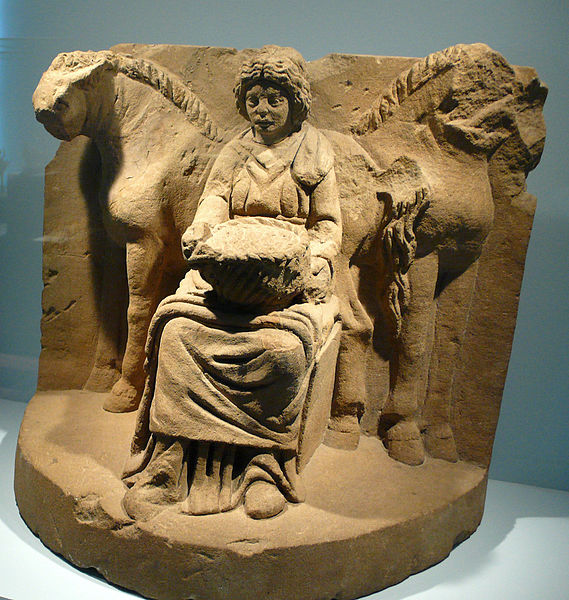Lugos (Gaulish) or Lugus (Latin), also known by other names, is a god of the Celtic pantheon. His name is rarely directly attested in inscriptions, but his importance can be inferred from place names and ethnonyms and status as king of the gods. His nature and attributes are deduced from the distinctive iconography of Gallo-Roman inscriptions to Mercury, who is widely believed to have been identified with him, and from the quasi-mythological narratives involving his later cognates, Welsh Lleu Llaw Gyffes and Irish Lugh Lámhfhada.
A three-headed image of a Celtic deity found in Paris; interpreted as Mercury and now believed to represent Lugus or Ogmios
Votive inscription to the Lucoves Arquieni. Lugo, Galicia.
Altar depicting a tricephalic god identified as Lug, discovered in Reims.
The gods and goddesses of the pre-Christian Celtic peoples are known from a variety of sources, including ancient places of worship, statues, engravings, cult objects, and place or personal names. The ancient Celts appear to have had a pantheon of deities comparable to others in Indo-European religion, each linked to aspects of life and the natural world. Epona was an exception and retained without association with any Roman deity. By a process of syncretism, after the Roman conquest of Celtic areas, most of these became associated with their Roman equivalents, and their worship continued until Christianization. Pre-Roman Celtic art produced few images of deities, and these are hard to identify, lacking inscriptions, but in the post-conquest period many more images were made, some with inscriptions naming the deity. Most of the specific information we have therefore comes from Latin writers and the archaeology of the post-conquest period. More tentatively, links can be made between ancient Celtic deities and figures in early medieval Irish and Welsh literature, although all these works were produced well after Christianization.

Epona, the Celtic goddess of horses and riding, lacked a direct Roman equivalent, and is therefore one of the most persistent distinctly Celtic deities. This image comes from Germany, about 200 AD
Replica of the incomplete Pillar of the Boatmen, from Paris, with four deities, including the only depiction of Cernunnos to name him (left, 2nd from top)
Detail of the antlered figure holding a torc and a ram-headed snake depicted on the 1st or 2nd century BC Gundestrup cauldron discovered in Jutland, Denmark
Epona, 3rd century AD, from Freyming (Moselle), France (Musée Lorrain, Nancy)







